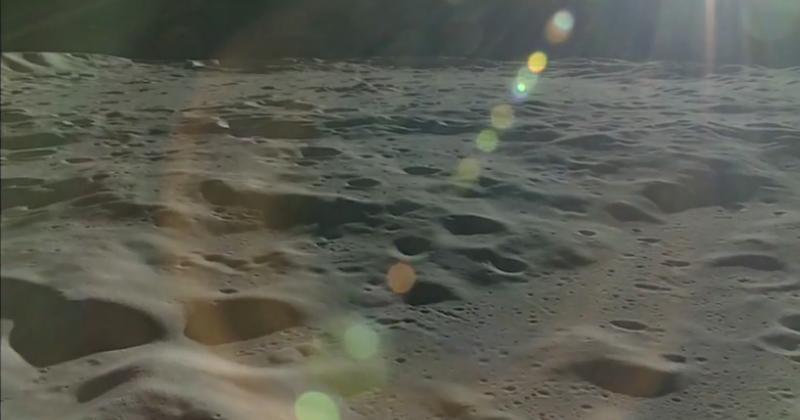The area where the Japanese spacecraft crashed is a plateau full of ancient craters * Observers with amateur telescopes could view the debris plume from the crash at the southern end of the moon as seen from Earth

As the Americans prepare to launch next week's double probe to the moon LRO/LCROSS, the Japanese space agency's Kaguya operation is coming to an end.
Yesterday at 21:30 Israel time, the Japanese space agency crashed the Kaguya spacecraft into the lunar surface. To make it convenient to observe the impact, the agency directed the operation to the area on the bright side of the moon (80 degrees East, 64 degrees South), and at the hours when the event could be observed using telescopes from Australia to Western Asia.
The area where the Japanese spacecraft was destroyed is a plateau full of ancient craters.
Among the achievements of the spacecraft is a video from the beginning of 2009 in which the Earth is seen causing a solar eclipse as the phenomenon is seen from the Moon. The spacecraft also provided fresh data on the composition of the far, mysterious side of the moon.
Observers with amateur telescopes could view the debris plume from the crash at the south end of the Moon as seen from Earth.
The scientists hope to learn something about the composition of the moon by analyzing the observations of the fragments that have flown by. They are also going to compare the images of the area as taken by the European SMART-1 spacecraft that circled the moon one year ago and mapped large parts of it, to the series of images that will be taken by other spacecraft after the crash (currently it is a Chinese spacecraft, an Indian spacecraft and the American spacecraft that will be launched next week).
Bernard Poing, who at the time managed the SMART-1 project at the European Space Agency, said that he hopes that in the future it will be possible to photograph the fresh, elongated crater created by the impact of the Japanese spacecraft, as well as the fragments that flew as a result of the crash in order to analyze their composition.
The crash plume was photographed by the IRIS2 camera on the Anglo-Australian Telescope, a bright flash seen near the time the spacecraft crashed.

12 תגובות
Obviously the spaceship was destroyed like most things launched
Omriwin:
http://picasaweb.google.com/lh/photo/Mwtzns-myaARFavL9a8ycg?feat=directlink
I understood what the photo was for, and if you didn't understand me, I asked if there was a photo of the crash itself. Thanks for the helpers
You see, it doesn't work for you, you still see and are not seen. 🙂
Maybe now with God's help...
Sorry, I'm trying to change a picture and I can't
maybe now?
Just an attempt - for a picture - nothing -
Of course the crash site was carefully chosen by the scientists, are there any data on the crash site?
Or what link?
Deduct the capital to delete the capital.
I hope we will get something out of it
The photo is not of the crash itself but of the site, seconds before the crash from inside the spaceship itself
Can you please post a picture that shows the crash "from above"?
That is, from a telescope on Earth...